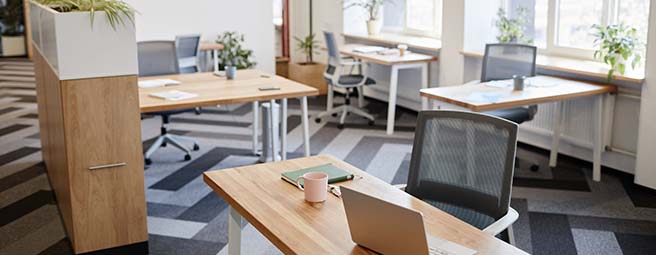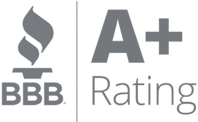
20 Ways to Improve Your Coworking Space Experience in 2025
Coworking spaces have transformed how professionals work, with over 40,000 facilities worldwide by 2024 serving 3.1 million coworkers globally. Yet many professionals struggle to maximize their coworking experience, missing opportunities for productivity gains, meaningful connections, and professional growth.
The difference between simply renting a desk and thriving in a coworking environment lies in strategic approach. Whether you're new to shared workspaces or looking to enhance your current experience, these 20 proven strategies will help you optimize your physical environment, build valuable relationships, maintain professional etiquette, and boost your productivity.
From workspace personalization to advanced networking techniques, each tip provides actionable steps you can implement immediately to transform your coworking experience from ordinary to exceptional.
Optimize Your Physical Workspace
Your physical environment directly impacts your productivity, mood, and professional presence. These five strategies will help you create an optimal workspace within the shared environment.
1. Choose Your Location Strategically
Location selection in a coworking space requires the same attention as choosing an apartment. Productivity in shared workspaces depends heavily on your daily positioning decisions.
Start by observing traffic patterns throughout the day. High-traffic areas near entrances, kitchens, and restrooms create energy and networking opportunities but can disrupt deep focus work. For concentration-intensive tasks, select quieter corners or designated quiet zones during peak hours.
Natural light access significantly affects your energy levels and mood. Position yourself near windows, when possible, but avoid direct afternoon sun that creates glare on screens. East-facing windows provide energizing morning light, while north-facing windows offer consistent, gentle illumination throughout the day.
Consider your work type when choosing locations. Creative professionals often benefit from the stimulating energy of communal areas, while analytical workers may prefer consistent, distraction-free zones. Coworking space productivity strategies show that matching your workspace to your task type can increase efficiency by 25%.
2. Personalize Your Space Within Guidelines
Thoughtful personalization creates a sense of ownership and comfort without violating shared space guidelines. Effective office personalization involves selecting items that serve multiple purposes.
Small plants like succulents or snake plants improve air quality while adding visual appeal. These low-maintenance options thrive in office environments and provide psychological benefits including stress reduction and improved focus. Choose plants in neutral containers that complement the existing space design.
Personal coffee mugs serve practical and social functions. A distinctive mug becomes a conversation starter and helps establish your presence in the community. Select something that reflects your personality or professional interests while maintaining workplace appropriateness.
Include one inspirational element—a meaningful quote, small photo, or motivational object. This personal anchor provides emotional support during challenging work moments. Workspace decoration strategies emphasize the importance of meaningful personal items in maintaining motivation and job satisfaction.
Avoid overwhelming your space or neighboring areas with excessive personalization. Remember that coworking spaces serve diverse professionals, so maintain broad appeal and professional standards in your choices.
3. Master Lighting and Ergonomics
Proper lighting and ergonomic setup prevent fatigue and health issues while enhancing your professional appearance during video calls. Workspace elevation tips highlight lighting as a critical productivity factor.
Place your monitor perpendicular to windows to reduce glare and eye strain. If natural light is insufficient or inconsistent, invest in a quality LED desk lamp with adjustable brightness and color temperature. Warm light (3000K) creates a comfortable atmosphere, while cooler light (5000K-6500K) enhances alertness and focus.
Monitor height should place the top of your screen at or slightly below eye level to maintain neutral neck position. Use laptop stands or external monitors to achieve proper positioning. Your keyboard should allow your arms to rest comfortably at 90-degree angles, with wrists in neutral position.
Chair adjustment affects your entire body alignment. Set seat height so your feet rest flat on the floor with thighs parallel to the ground. Adjust backrest to support your spine's natural curve, particularly in the lumbar region. Creative workspace design demonstrates how proper ergonomics contribute to long-term health and productivity.
4. Implement Smart Storage Solutions
Organization systems in shared spaces require balance between functionality and space respect. Effective storage maximizes your productivity while maintaining clean, professional appearance.
Vertical storage solutions utilize space efficiently without encroaching on neighboring areas. Desktop organizers, small shelves, and wall-mounted options keep essential items accessible while maintaining clear work surfaces. Choose modular systems that adapt to different workspace configurations.
Cable management prevents tangled wires and creates professional appearance. Use cable clips, cord organizers, and cable trays to route power and data cables cleanly. This organization reduces setup time when changing workspaces and prevents equipment damage.
Daily organization routines maintain consistent productivity. Spend five minutes each morning arranging essential items and five minutes each evening clearing your workspace. Coworking space etiquette emphasizes the importance of leaving workspaces clean for the next user.
Digital organization complements physical systems. Use cloud storage for easy access across devices and locations. Organize digital files with consistent naming conventions and folder structures that work regardless of your physical workspace location.
5. Create Acoustic Comfort
Sound management in shared environments requires personal solutions and community awareness. Effective focus strategies identify noise control as essential for productivity.
Quality noise-canceling headphones provide immediate acoustic improvement. Look for models with active noise cancellation that blocks low-frequency sounds like air conditioning and background conversations. Over-ear designs typically offer better noise isolation than in-ear models.
White noise apps and ambient sound generators mask distracting conversations and sudden noises. Nature sounds, coffee shop ambiance, or instrumental music create consistent audio environments that support concentration. Experiment with different soundscapes to find your optimal focus soundtrack.
Phone call etiquette protects both your privacy and others' concentration. Use designated phone booths or private areas for calls longer than two minutes. When brief calls are necessary at your desk, speak quietly and face away from neighboring workspaces.
Be mindful of your own noise contribution. Type gently, avoid loud phone notifications, and keep conversations at appropriate volumes. Coworking space guidelines stress that acoustic courtesy creates better environments for everyone.
Table 1: Workspace Location Guide – Choose Your Spot Based on Work Type
|
Work Type |
Best Location |
Noise Level |
Benefits |
Drawbacks |
|
Deep Focus Work |
Quiet corners, designated quiet zones |
Low |
Minimal distractions, consistent environment |
Limited networking opportunities |
|
Creative Brainstorming |
Near common areas, lounge spaces |
Medium |
Inspiring energy, visual stimulation |
Potential interruptions |
|
Video Calls/Meetings |
Phone booths, private meeting rooms |
Controlled |
Professional appearance, privacy |
Limited availability, booking required |
|
Collaborative Projects |
Communal worktables, open areas |
Medium-High |
Easy team interaction, shared resources |
Background noise, less privacy |
|
Administrative Tasks |
Standard desk areas, moderate traffic |
Medium |
Balance of focus and accessibility |
Variable noise levels |
|
Networking/Relationship Building |
Kitchen, lounge, common areas |
High |
Natural conversation opportunities |
Not suitable for focused work |
Build Professional Relationships
Coworking spaces offer unique networking opportunities unavailable in traditional offices. These strategies help you build meaningful professional relationships that support career growth and business development.
6. Master Approachable Body Language
Non-verbal communication determines whether others feel comfortable initiating conversations with you. Networking mastery in coworking spaces emphasizes body language as the foundation of successful relationship building.
Open posture signals approachability and confidence. Keep your shoulders relaxed, avoid crossing your arms, and maintain an upright but comfortable seated position. When walking through common areas, make brief eye contact and smile genuinely at people you encounter.
Timing awareness prevents interrupting focused work sessions. Look for natural break indicators—people stretching, checking phones, or moving away from their desks. These moments signal openness to interaction without disrupting productivity.
Facial expressions convey interest and warmth even before verbal communication begins. Practice genuine smiles that reach your eyes, and maintain pleasant expressions during routine activities like getting coffee or using shared facilities.
Cultural sensitivity ensures comfortable interactions for all community members. Be aware that personal space preferences, eye contact comfort levels, and conversation styles vary across cultures. Start with professional, respectful approaches and adjust based on individual responses.
7. Utilize Common Areas Effectively
Shared spaces provide natural networking environments where professional conversations develop organically. Maximizing networking opportunities requires strategic use of these communal zones.
Kitchen areas offer excellent conversation opportunities during coffee breaks and mealtimes. Arrive slightly before or after peak hours to avoid crowding while still encountering other members. Offer to make coffee for others or share interesting snacks as relationship-building gestures.
Lounge spaces encourage longer, more substantive conversations than brief kitchen encounters. Use these areas for informal meetings, phone calls that benefit from comfortable seating, or work sessions that welcome occasional interruptions and collaboration.
Lunch tables create extended interaction opportunities. Join existing conversations when appropriate or invite colleagues to join your lunch. Food sharing naturally breaks down professional barriers and creates memorable personal connections.
Communal work areas balance productivity with social interaction. These zones work well for tasks that benefit from ambient energy while remaining open to collaboration and spontaneous discussions about projects and challenges.
8. Attend and Host Community Events
Structured events provide organized networking opportunities with built-in conversation topics and shared experiences. Essential networking tips highlight event participation as crucial for community integration.
Workshop attendance demonstrates commitment to professional development while connecting you with like-minded colleagues. Arrive early to introduce yourself to organizers and other early attendees. Prepare thoughtful questions related to the topic to contribute meaningfully to discussions.
Skill-sharing sessions allow you to showcase expertise while learning from others. Volunteer to present on topics within your professional area, or propose informal lunch-and-learn sessions on subjects that interest the community.
Social events build personal connections that strengthen professional relationships. Happy hours, game nights, and community celebrations create relaxed environments where authentic relationships develop beyond work-focused interactions.
Professional development opportunities position you as a growth-oriented community member. Industry meetups, speaker series, and networking mixers hosted at coworking spaces provide targeted relationship-building with relevant professional contacts.
Event hosting establishes you as a community leader and valuable member. Start small with informal gatherings or specialized skill shares, then consider larger events as your community involvement grows.
9. Develop Consistent Presence Patterns
Regular attendance and predictable patterns help other members recognize and connect with you more easily. Building professional networks requires consistent visibility and reliability.
Maintain regular working hours that align with peak community activity. This consistency allows natural relationship development through repeated positive interactions over time. Other members begin to associate you with reliability and professionalism.
Use similar workspace areas when possible, to increase familiarity with nearby colleagues. While variety can be refreshing, some consistency helps others know where to find you for collaboration opportunities or casual conversations.
Participate in routine community activities like morning coffee rituals or afternoon break walks. These repeated shared experiences create bonds and provide ongoing conversation opportunities about projects, challenges, and successes.
Professional reputation building occurs through consistent positive interactions rather than sporadic impressive moments. Focus on being helpful, reliable, and genuinely interested in others' work and success.
10. Practice Active Listening and Engagement
Meaningful professional relationships require genuine interest in others' work, challenges, and goals. Active listening skills differentiate superficial networking from valuable relationship building.
Ask thoughtful follow-up questions that demonstrate engagement with others' projects and professional interests. Move beyond surface-level "What do you do?" to explore specific challenges, exciting developments, and professional goals.
Remember personal and professional details from previous conversations. Reference earlier discussions about project deadlines, client challenges, or professional development goals. This attention shows genuine interest and builds relationship depth.
Share relevant experiences and insights that provide value to others. When someone mentions a challenge you've faced, offer specific strategies or resources that helped you. Focus on giving value rather than impressing others with your accomplishments.
Follow up on significant conversations with relevant resources, introductions, or continued discussion. Send articles related to their interests, make introductions to relevant contacts, or schedule focused conversations about mutual interests or collaboration opportunities.
Follow Essential Coworking Etiquette
Professional courtesy in shared environments ensures positive experiences for all community members while establishing your reputation as a considerate colleague.
11. Respect Noise Boundaries
Sound awareness protects everyone's productivity and creates professional atmosphere conducive to focused work. Coworking space etiquette guidelines establish noise management as fundamental courtesy.
Phone call volume should remain low enough that nearby colleagues cannot follow your conversation content. For important or sensitive calls, use designated phone booths or private meeting rooms regardless of call duration.
Headphone usage for all audio content—music, podcasts, videos, or background noise—shows respect for others' concentration needs. Even low-volume audio without headphones can be distracting in quiet work environments.
Keyboard typing techniques can minimize noise disruption. Avoid aggressive typing styles that create unnecessary sound. Mechanical keyboards, while popular for their tactile feedback, may be inappropriate in quiet coworking zones.
Personal conversation volume should match the ambient noise level of your workspace area. Longer discussions belong in designated collaboration zones or common areas rather than quiet work sections.
Alert and notification sounds should be silenced or minimized on all devices. Constant phone buzzing, email alerts, and application notifications create cumulative distraction for nearby workers.
12. Maintain Shared Space Cleanliness
Cleanliness standards in shared environments require higher attention than personal offices because your habits affect multiple colleagues daily. Professional coworking behavior emphasizes cleanliness as respect for community.
Kitchen cleanup protocols include washing dishes immediately after use, wiping down surfaces you've used, and properly disposing of trash and recyclables. Leave shared appliances clean and ready for the next user.
Desk sanitization practices have become standard expectations. Clean your workspace surface before and after use, especially when using shared desks or hot-desking arrangements. Keep hand sanitizer available for personal use and courtesy toward others.
Equipment care applies to shared printers, copiers, charging stations, and technology resources. Report malfunctions immediately, replace supplies when depleted, and handle equipment gently to ensure longevity for all users.
Personal belonging management prevents clutter in shared spaces. Avoid leaving personal items in common areas overnight, and ensure your belongings remain within your designated workspace boundaries.
Bathroom and common area maintenance extends basic courtesy to all shared facilities. Report maintenance issues promptly and maintain the same cleanliness standards you would expect from others.
13. Be Mindful of Space Usage
Physical boundaries and resource sharing require conscious awareness of your impact on others' ability to work effectively and comfortably.
Desk territory respect means keeping personal belongings within your designated area without expanding into neighboring spaces. Avoid using adjacent chairs or desk surfaces for personal items when other members need access.
Equipment sharing etiquette includes limiting time with shared resources during peak hours, scheduling printer usage for large jobs, and ensuring others have access to commonly used items like staplers or hole punches.
Meeting room courtesy requires punctual arrival and departure, proper booking procedures, and immediate cancellation when plans change. Clean meeting rooms after use and reset furniture to standard configurations.
Storage space limitations apply to both personal lockers and shared storage areas. Use only your allocated space and avoid storing items in common areas beyond designated timeframes.
Personal boundary awareness includes respecting others' workspace privacy, avoiding interruptions during obviously focused work sessions, and maintaining appropriate professional distance in close quarters.
14. Practice Health Awareness
Community health responsibility has gained importance in shared work environments, requiring individual awareness of collective wellbeing impacts.
Illness policies should guide your decisions about working in shared spaces when feeling unwell. Stay home when experiencing symptoms that could affect others, and take advantage of remote work options when available.
Personal hygiene standards affect everyone's comfort in close working proximity. Maintain professional grooming standards and be mindful of strong fragrances that might trigger allergies or sensitivities in enclosed spaces.
Food storage guidelines prevent odors and pest issues that affect the entire community. Use designated refrigerator spaces appropriately, dispose of perishable items promptly, and avoid bringing foods with strong smells to open work areas.
Wellness consideration includes being aware of how your habits—exercise routines, eating schedules, break activities—might impact others sharing the space throughout the day.
Air quality awareness involves opening windows when appropriate, avoiding activities that create lingering odors, and being conscious of how personal choices affect the shared atmosphere.
15. Honor Time and Schedule Commitments
Reliability in shared environments affects not only your professional reputation but also others' ability to plan and execute their work effectively.
Meeting room punctuality ensures other members can access booked spaces on schedule. Arrive on time for your reservations and end meetings promptly to allow proper transition time for subsequent bookings.
Booking system courtesy includes accurate time estimates, prompt cancellation when plans change, and honest representation of group sizes when reserving spaces designed for specific capacities.
Shared resource scheduling applies to equipment sign-ups, hot desk reservations, and any other bookable amenities. Honor your commitments and communicate changes as early as possible.
Professional reliability extends to informal commitments like collaboration promises, introduction offers, and follow-up conversations. Your consistency in small commitments builds trust for larger professional opportunities.
Communication timing shows respect for others' schedules and work styles. Send non-urgent messages during business hours and respect different working patterns within the community.
Table 2: Coworking Etiquette Quick Reference Guide
|
Situation |
Do |
Don't |
Why It Matters |
|
Phone Calls |
Use phone booths for calls over 2 minutes |
Take long calls at your desk |
Protects others' concentration and your privacy |
|
Audio Content |
Always use headphones |
Play music/videos through speakers |
Prevents sound pollution in shared space |
|
Kitchen Use |
Clean up immediately after use |
Leave dishes or spills for others |
Maintains hygiene and community respect |
|
Workspace Setup |
Keep belongings within your area |
Spread items to neighboring spaces |
Respects others' boundaries and space |
|
Meeting Rooms |
Book in advance; arrive/leave on time |
Show up without booking or run over time |
Ensures fair access for all members |
|
Illness |
Work remotely when feeling unwell |
Come to shared space when sick |
Protects community health and wellbeing |
|
Conversations |
Keep volume appropriate for area |
Have loud personal conversations |
Maintains professional atmosphere |
|
Equipment Sharing |
Report issues immediately |
Leave broken equipment for others to discover |
Keeps shared resources functional |
Maximize Productivity and Collaboration
Advanced strategies for optimizing your work performance while contributing to a collaborative community atmosphere.
16. Implement Time Management Systems
Structured productivity approaches help you maintain focus and efficiency while remaining open to networking and collaboration opportunities. Productivity enhancement strategies provide frameworks for balancing individual work with community engagement.
The Pomodoro Technique adapts well to coworking environments by creating natural break points for social interaction. Work in focused 25-minute intervals, then use 5-minute breaks for brief conversations, stretching, or environmental changes within the space.
Task prioritization methods help you identify which activities benefit from the collaborative coworking energy versus those requiring isolation. Schedule networking activities during your lower-energy periods and reserve peak focus time for demanding individual work.
Energy level awareness allows you to match tasks to your natural rhythms while taking advantage of coworking space amenities. Use high-energy periods for challenging work and lower-energy times for community engagement and collaborative activities.
Focus time designation involves communicating your availability to colleagues through body language, positioning, and subtle signals. Develop consistent methods for indicating when you're open to interaction versus when you need uninterrupted concentration.
Break optimization includes using coworking space amenities strategically to refresh your mental state. Take advantage of different seating areas, outdoor spaces, and amenities to create variety in your daily routine.
17. Leverage Available Amenities
Coworking spaces offer resources and facilities that can enhance your productivity beyond what's available in home offices or traditional workplaces.
Meeting room utilization provides professional spaces for client calls, team meetings, and focused work sessions requiring privacy. Book these spaces strategically for activities that benefit from professional environments or confidential discussions.
Technology resource access includes high-speed internet, presentation equipment, printing facilities, and specialized software or hardware. Understand what's available and factor these resources into your work planning and client service capabilities.
Professional service integration may include mail handling, receptionist services, or business address usage. These services can enhance your professional presence and operational efficiency, particularly for freelancers and small business owners.
Break area benefits extend beyond simple relaxation to include informal meeting spaces, phone call areas, and environmental changes that boost creativity and problem-solving abilities.
Event space opportunities allow you to host client meetings, small presentations, or professional gatherings that enhance your business development activities while contributing to the community atmosphere.
18. Create Productive Daily Routines
Consistent routines help you maintain productivity and professional presence while adapting to the dynamic nature of shared workspaces.
Morning preparation rituals set positive tone for productive days. Develop consistent startup routines that work regardless of your specific workspace location, including digital organization, priority review, and environmental setup.
Workspace setup consistency reduces decision fatigue and transition time when moving between different areas or desk configurations. Create portable organization systems that travel easily and establish quickly.
End-of-day organization prepares you for smooth transitions and maintains respect for shared resources. Develop shutdown routines that include workspace cleanup, next-day preparation, and proper storage of personal items.
Weekly planning sessions help you optimize your coworking space usage by aligning your work needs with space amenities, community events, and networking opportunities available throughout the week.
Habit formation strategies focus on developing sustainable practices that enhance both individual productivity and community contribution. Start with small, consistent actions that compound over time.
19. Track Performance and Adjust Strategies
Systematic evaluation of your coworking experience helps you optimize your approach and maximize the return on your membership investment.
Productivity measurement tools help you understand how different workspace configurations, times of day, and environmental factors affect your work output and quality. Use time-tracking apps or simple logging methods to identify patterns.
Goal setting and review processes ensure your coworking space usage aligns with broader professional objectives. Regularly assess whether your networking activities, workspace choices, and community engagement support your career goals.
Environment impact assessment involves evaluating how different aspects of the coworking experience—location, noise levels, social interactions—affect your work performance and job satisfaction.
Strategy refinement based on data and experience allows you to continuously improve your coworking space utilization. Experiment with different approaches and measure results to develop personalized optimization strategies.
Feedback integration from colleagues and community managers provides external perspectives on your coworking space effectiveness and professional presence within the community.
20. Foster Knowledge Sharing and Collaboration
Contributing to the collective intelligence and collaborative potential of your coworking community creates value for everyone while establishing your professional reputation. Community building strategies emphasize knowledge sharing as essential for thriving coworking environments.
Skill exchange opportunities allow you to teach others while learning new capabilities. Organize informal workshops, offer expertise consultations, or participate in collaborative learning initiatives that benefit the entire community.
Project collaboration initiatives can lead to new business opportunities, professional development, and innovative solutions to shared challenges. Stay open to partnership possibilities with fellow coworking members whose skills complement your own.
Mentorship relationship development provides valuable professional growth opportunities for both mentors and mentees. Share your experience with newcomers while learning from more experienced professionals in different industries.
Professional resource sharing includes tools, contacts, knowledge, and opportunities that benefit others in your coworking community. Building a reputation as a generous, helpful community member creates goodwill and reciprocal support.
Innovation catalyst activities involve bringing together diverse perspectives and skills to solve problems or explore new opportunities. Coworking spaces provide unique environments for cross-industry collaboration and creative problem-solving.
Transform Your Coworking Experience Today
These 20 strategies transform ordinary desk rental into a comprehensive professional development and business growth platform. Start by implementing two to three strategies immediately—perhaps optimizing your workspace setup, introducing yourself to neighbors, and attending the next community event.
Success in coworking spaces comes from balancing individual productivity needs with active community participation. The professionals who thrive in these environments contribute to the collective success while achieving their personal goals.
Your coworking space offers more than just a place to work—it provides opportunities for professional growth, business development, and meaningful connections that can transform your career trajectory. Act now to gain these benefits and build the professional environment you want.
Frequently Asked Questions
1. How can I be more productive in a coworking space?
To maximize productivity in a coworking space, choose your location strategically based on your daily tasks—quiet corners for deep focus work or high-traffic areas for collaborative energy. Implement time management systems like the Pomodoro Technique with 25-minute focused work intervals, use quality noise-canceling headphones to control your acoustic environment, and create consistent daily routines including morning preparation rituals and end-of-day organization. Position yourself near natural light when possible and invest in proper ergonomic setup to maintain energy levels throughout the day.
2. What's the proper etiquette for networking in coworking spaces?
Effective coworking networking starts with approachable body language—maintain open posture, make brief eye contact, and smile genuinely when moving through common areas. Use shared spaces like kitchens and lounges strategically during coffee breaks for organic conversations. Attend community events regularly and come prepared with engaging questions or stories. Practice active listening by asking thoughtful follow-up questions and remembering details from previous conversations. Always follow up on meaningful discussions with relevant resources or introductions and focus on providing value to others rather than just promoting yourself.
3. How should I personalize my coworking desk without violating space rules?
Personalize your coworking space thoughtfully by adding small, functional items that serve multiple purposes. Include a low-maintenance plant like a succulent for air quality and visual appeal, use a distinctive personal coffee mug as a conversation starter, and display one meaningful inspirational element such as a motivational quote or small photo. Implement smart storage solutions with vertical organizers and cable management systems to keep your area clean and professional. Always respect neighboring spaces by keeping personal items within your designated area and following the coworking space's specific guidelines for personalization.
4. What are the most important coworking space etiquette rules to follow?
Essential coworking etiquette centers on noise awareness and cleanliness. Always use headphones for any audio content including music, videos, or calls, and move longer phone conversations to designated phone booths or private areas. Maintain shared spaces by cleaning up after yourself in kitchens, sanitizing your workspace before and after use, and properly disposing of trash. Respect physical boundaries by keeping belongings within your designated area and avoiding monopolizing shared resources like printers or meeting rooms. Practice health awareness by staying home when feeling unwell and being mindful of strong fragrances in close quarters.
5. How can I build meaningful professional relationships in a coworking environment?
Building valuable coworking relationships requires consistent presence and genuine engagement. Develop regular working hours and use similar workspace areas to increase familiarity with colleagues. Participate actively in community events, skill-sharing sessions, and informal gatherings to meet diverse professionals. Engage in knowledge exchange by offering your expertise and asking for input on challenges within your areas of experience. Practice inclusive behavior by making introductions between members who might benefit from knowing each other, celebrating others' successes, and welcoming new members with helpful information about the space's culture and resources. Focus on contributing to the community's collective success rather than just personal networking goals.
Additional Resources
Top 10 Coworking Spaces in NYC for Professionals
https://www.davincimeetingrooms.com/blog/top-10-coworking-spaces-in-new-york-city-for-professionals
Able to Use a Coworking Spaces as a Business Address
https://www.davincimeetingrooms.com/blog/can-i-use-a-coworking-space-as-a-business-address
15 Tips to Make Your Office More Sustainable
https://www.davincimeetingrooms.com/blog/15-tips-to-make-your-office-more-sustainable

Categories
Subscribe to Our Blog
Archive

- November 2025
- October 2025
- September 2025
- August 2025
- July 2025
- June 2025
- May 2025
- April 2025
- March 2025
- February 2025
- January 2025
- December 2024
- November 2024
- October 2024
- September 2024
- August 2024
- July 2024
- June 2024
- May 2024
- April 2024
- March 2024
- February 2024
- January 2024
- December 2023
- November 2023
- October 2023
- September 2023
- August 2023
- July 2023
- June 2023
- May 2023
- April 2023
- March 2023
- February 2023
- January 2023
- December 2022
- November 2022
- October 2022
- September 2022
- August 2022
- July 2022
- June 2022
- May 2022
- April 2022
- March 2022
- February 2022
- January 2022
- December 2021
- November 2021
- October 2021
- September 2021
- August 2021
- July 2021
- June 2021
- May 2021
- April 2021
- March 2021
- February 2021
- January 2021
- December 2020
- November 2020
- October 2020
- September 2020
- August 2020
- July 2020
- June 2020
- May 2020
- April 2020
- March 2020
- February 2020
- January 2020
- December 2019
- November 2019
- October 2019
- September 2019
- August 2019
- July 2019
- June 2019
- May 2019
- April 2019
- March 2019
- February 2019
- January 2019
- December 2018
- November 2018
- October 2018
- September 2018
- August 2018
- July 2018
- June 2018
- May 2018
- April 2018
- March 2018
- February 2018
- January 2018
- December 2017
- September 2017
- June 2017
- April 2017
- October 2016
- July 2016
- May 2016
- April 2016
- February 2016
- November 2015
- September 2015
- February 2015
- January 2015
- December 2014
- November 2014
- October 2014
- August 2014
- July 2014
- July 2013
- May 2013
- February 2013
- December 2012
Talk to an expert
Want help finding the ideal meeting room? Give us a call
Book the Perfect Meeting Room Now
Find a Meeting Room








